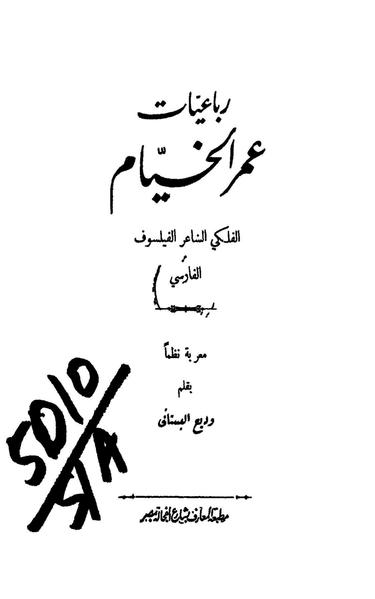 1
1title: Beethoven
artist: Joseph Karl Stieler
date: 1820
medium: Oil on canvas
dimensions: size cm 62 50
current location: w|Beethoven-Haus||de , Bonn <!--within the institution-->
source: link
credit: link
license:Public domain
 2
2title: 1855 Colton Map of Turkey, Iraq, and Syria Geographicus - TurkeyIraq-colton-1855
artist: J. H. Colton
date: 1855 (dated)
dimensions: Size unit=in width=16.5 height=13
source: Colton, G. W., Colton's Atlas of the World Illustrating Physical and Political geography, Vol 2, New York, 1855 (First Edition). Geographicus-source
credit: This file was provided to Wikimedia Commons by Geographicus Rare Antique Maps, a specialist dealer in rare maps and other cartography of the 15th, 16th, 17th, 18th and 19th centuries, as part of a cooperation project.
license:Public domain
 3
3title: 1866 Johnson Map of Arabia, Persia, Turkey and Afghanistan (Iraq) Geographicus - Arabia-johnson-1866
artist: Alvin Jewett Johnson
date: 1866 (undated)
dimensions: Size unit=in width=16.5 height=13
source: Johnson, A. J., Johnson's New Illustrated Family Atlas of The World with Physical geography, and with Descriptions Geographical, Statistical, and Historic including The Latest Federal Census, A Geographical Index, and a Chronological History of the Civil War in America, 1866. Geographicus-source
credit: This file was provided to Wikimedia Commons by Geographicus Rare Antique Maps, a specialist dealer in rare maps and other cartography of the 15th, 16th, 17th, 18th and 19th centuries, as part of a cooperation project.
license:Public domain
 4
4title: 1724 De L'Isle Map of Persia (Iran, Iraq, Afghanistan) Geographicus - Persia-delisle-1724
artist: Guillaume Delisle
date: 1724 (undated)
dimensions: Size unit=in width=25 height=20
source: De L'Isle, G., <i>Atlas de Geographie</i>, c. 1730. Geographicus-source
credit: This file was provided to Wikimedia Commons by Geographicus Rare Antique Maps, a specialist dealer in rare maps and other cartography of the 15th, 16th, 17th, 18th and 19th centuries, as part of a cooperation project.
description: A fine first edition example of Guillaume De L’Isle’s important 1724 map of Persia. Covers from the Crimea and the Sea of Azov south to the Persian Gulf and the Straight of Ormuz and east as far as Kashmir (Cachmir) and Kabul (Caboul). This map includes modern day Iran, Iraq, Afghanistan, Kuwait, Uzbekistan, Turkmenistan, Tajikistan, Georgia, Armenia, and Azerbaijan, with adjacent parts of Russia, Pakistan, Turkey, Ukraine, and Kazakhstan, and Arabia. Cartographically De L’Isle’s mapping of Persia marks a significant advance in European cartographic knowledge of the region. This map benefits considerably from Russian cartographic surveys and other sources no doubt smuggled to Guillaume De L’Isle by his brother Nicholas de L’Isle, who held a cartographic position with the Russian Academy of Sciences. The extent to which Russian data influenced this map is nowhere more evident than in De L’Isle’s remarkable rendering of the Caspian Sea – one of the first accurate maps of the great lake to follow Van Verden’s historic survey of 1721. Russian cartographic information is also apparent with regard to place names, such as the Russian name for the Aral Sea (Glouchoiye). It is equally likely that De L’Isle drew on Russian sources for his mapping of the Silk Route centers of Bukhara, Samarkand, and Ferghana, which were known stopping points for Russian trade envoys to China. For the remainder of Persia De L’Isle most likely updated Persian and arabic cartographic information with reports from Georgian and Armenian traders and mercenaries active throughout Persia. It may be through these sources that De L’Isle was able to add considerable geographic information regarding trade routes and place names in central Persia. These include such significant advances as the identification of Terheran (Tiheran), the current capital of Iran, which is notable absent it earlier European maps of Persia. This map was drawn by Guillaume De L’Isle and engraved by P. Starckman. It issued independently as well as included in a number of composite atlases including De L’Isle’s 1731 Atlas de Geographie . A number of reissues by Buache, Covens & Mortier, and others followed.
license:Public domain
 5
5title: 1865 Spruner Map of Arabia and Egypt in Antiquity Geographicus - Arabia-spruner-1865
artist: Karl Spruner von Merz
date: 1865 (undated)
dimensions: Size unit=in width=16 height=13
source: Spruner, Karl von, <i>Spruner-Menke Atlas Antiquus,</i>, (Gotha: Justus Perthes), 1865. Geographicus-source
credit: This file was provided to Wikimedia Commons by Geographicus Rare Antique Maps, a specialist dealer in rare maps and other cartography of the 15th, 16th, 17th, 18th and 19th centuries, as part of a cooperation project.
description: A particularly interesting historic map, this is Karl von Spruner’s 1865 rendering of Arabia, Aethiopia (Ethiopia) and Egypt (Aegyptus) in antiquity. Centered on the Red Sea or Mare Rubrum , this map covers the entirety of the Arabian Peninsula, the Persian Gulf, and the Nile Valley as far south as Lake Tana (Pseuba), the source of the Blue Nile. Like most of Spruner’s work this map overlays ancient political geographies on relatively contemporary physical geographies, thus identifying the sites of forgotten towns and villages, the movements of armies, and the disposition of lands in the region. This particular example includes both ancient Latin and more contemporary arabic names (transliterated of course) for many important regions and sites. Additionally, two inset maps are offered. In the lower left hand quadrant a map labeled “Heptanomis et Thebais” focuses on the course of the Nile from Heptatnomis (near Fayum) south to just past modern day Aswan, covering in the process many of the ancient Egyptian cities now submerged under the waters of Lake Nasser. Another inset, in the upper right quadrant, focuses on the fertile Nile Delta, forming an inverted triangle between Alexandria, Memphis, and Casluch. As a whole the map labels important cities, rivers, mountain ranges and other minor topographical detail. Territories and countries outlined in color. The whole is rendered in finely engraved detail exhibiting the fine craftsmanship for which the Perthes firm is known.
license:Public domain
 6
6title: Carte de Perse, dressee pour l'usage du Roy. Par G. Delisle premier Geographe de S.M. de l'Academie Royale des Sciences.
artist: Guillaume Delisle
date: 1724 (undated)
dimensions: Size unit=in width=25 height=20
source: Extracted from|Image:1724 De L'Isle Map of Persia (Iran, Iraq, Afghanistan) - Geographicus - Persia-delisle-1724.jpg * Original source: De L'Isle, G., <i>Atlas de Geographie</i>, c. 1730. Geographicus-source
credit: This file was provided to Wikimedia Commons by Geographicus Rare Antique Maps, a specialist dealer in rare maps and other cartography of the 15th, 16th, 17th, 18th and 19th centuries, as part of a cooperation project.
description: A fine first edition example of Guillaume De L’Isle’s important 1724 map of Persia. Covers from the Crimea and the Sea of Azov south to the Persian Gulf and the Straight of Ormuz and east as far as Kashmir (Cachmir) and Kabul (Caboul). This map includes modern day Iran, Iraq, Afghanistan, Kuwait, Uzbekistan, Turkmenistan, Tajikistan, Georgia, Armenia, and Azerbaijan, with adjacent parts of Russia, Pakistan, Turkey, Ukraine, and Kazakhstan, and Arabia. Cartographically De L’Isle’s mapping of Persia marks a significant advance in European cartographic knowledge of the region. This map benefits considerably from Russian cartographic surveys and other sources no doubt smuggled to Guillaume De L’Isle by his brother Nicholas de L’Isle, who held a cartographic position with the Russian Academy of Sciences. The extent to which Russian data influenced this map is nowhere more evident than in De L’Isle’s remarkable rendering of the Caspian Sea – one of the first accurate maps of the great lake to follow Van Verden’s historic survey of 1721. Russian cartographic information is also apparent with regard to place names, such as the Russian name for the Aral Sea (Glouchoiye). It is equally likely that De L’Isle drew on Russian sources for his mapping of the Silk Route centers of Bukhara, Samarkand, and Ferghana, which were known stopping points for Russian trade envoys to China. For the remainder of Persia De L’Isle most likely updated Persian and arabic cartographic information with reports from Georgian and Armenian traders and mercenaries active throughout Persia. It may be through these sources that De L’Isle was able to add considerable geographic information regarding trade routes and place names in central Persia. These include such significant advances as the identification of Terheran (Tiheran), the current capital of Iran, which is notable absent it earlier European maps of Persia. This map was drawn by Guillaume De L’Isle and engraved by P. Starckman. It issued independently as well as included in a number of composite atlases including De L’Isle’s 1731 Atlas de Geographie . A number of reissues by Buache, Covens & Mortier, and others followed.
license:Public domain
 7
7title: Carte de Perse, dressee pour l'usage du Roy. Par G. Delisle premier Geographe de S.M. de l'Academie Royale des Sciences.
artist: Guillaume Delisle
date: 1724 (undated)
dimensions: Size unit=in width=25 height=20
source: Extracted from|Image:1724 De L'Isle Map of Persia (Iran, Iraq, Afghanistan) - Geographicus - Persia-delisle-1724.jpg * Original source: De L'Isle, G., <i>Atlas de Geographie</i>, c. 1730. Geographicus-source
credit: This file was provided to Wikimedia Commons by Geographicus Rare Antique Maps, a specialist dealer in rare maps and other cartography of the 15th, 16th, 17th, 18th and 19th centuries, as part of a cooperation project.
description: A fine first edition example of Guillaume De L’Isle’s important 1724 map of Persia. Covers from the Crimea and the Sea of Azov south to the Persian Gulf and the Straight of Ormuz and east as far as Kashmir (Cachmir) and Kabul (Caboul). This map includes modern day Iran, Iraq, Afghanistan, Kuwait, Uzbekistan, Turkmenistan, Tajikistan, Georgia, Armenia, and Azerbaijan, with adjacent parts of Russia, Pakistan, Turkey, Ukraine, and Kazakhstan, and Arabia. Cartographically De L’Isle’s mapping of Persia marks a significant advance in European cartographic knowledge of the region. This map benefits considerably from Russian cartographic surveys and other sources no doubt smuggled to Guillaume De L’Isle by his brother Nicholas de L’Isle, who held a cartographic position with the Russian Academy of Sciences. The extent to which Russian data influenced this map is nowhere more evident than in De L’Isle’s remarkable rendering of the Caspian Sea – one of the first accurate maps of the great lake to follow Van Verden’s historic survey of 1721. Russian cartographic information is also apparent with regard to place names, such as the Russian name for the Aral Sea (Glouchoiye). It is equally likely that De L’Isle drew on Russian sources for his mapping of the Silk Route centers of Bukhara, Samarkand, and Ferghana, which were known stopping points for Russian trade envoys to China. For the remainder of Persia De L’Isle most likely updated Persian and arabic cartographic information with reports from Georgian and Armenian traders and mercenaries active throughout Persia. It may be through these sources that De L’Isle was able to add considerable geographic information regarding trade routes and place names in central Persia. These include such significant advances as the identification of Terheran (Tiheran), the current capital of Iran, which is notable absent it earlier European maps of Persia. This map was drawn by Guillaume De L’Isle and engraved by P. Starckman. It issued independently as well as included in a number of composite atlases including De L’Isle’s 1731 Atlas de Geographie . A number of reissues by Buache, Covens & Mortier, and others followed.
license:Public domain
 8
8title: Rubaiyat of Omar Khayyam
artist: Omar Khayyam
date: 1911
medium: ru 1=Книги fr 1=Livres en 1=Books zh 1=图书 pt 1=Livros ar 1=كتب es 1=Libros
dimensions: en 1=144 pages
current location: ru|1=Александрийская библиотека fr|1=Bibliotheca Alexandrina en|1=Bibliotheca Alexandrina zh|1=亚历山大图书馆 pt|1=Biblioteca de Alexandria ar|1=مكتبة الإسكندرية es|1=Biblioteca de Alejandría
description: Ghiyath al-Din Abu'l-Fath Umar ibn Ibrahim Al-Nisaburi al-Khayyami, better known as Omar Khayyam (1048–1131 AD), was a Persian Muslim mathematician, astronomer, philosopher, and poet, whose interests also included music, mechanics, and geography. He was born and died in Nishapur, Iran, where he taught the philosophical theories of Ibn Sina (also known as Avicenna, 980–1037), among other disciplines. Although Khayyam is known to later generations mainly as a poet, his work on algebra, mathematics, and calendar reform were of great importance. Khayyam is known for his rubaiyat (quatrains), which are two-line stanzas with two parts. The term “rubaiyat” is derived from the arabic root of the word “four.” Shown here is a collection of Khayyam’s quatrains, the interpretation of which has been a contentious issue. While some see the work as a call to enjoy and celebrate life, others view it in a mystical context. Still others contend that it reinforces pessimism and nihilism. These interpretations have been greatly influenced by the varying translations of the collection. The exact number of Khayyam’s quatrains is unknown, as many are thought to have been added to the original collection by later poets. Still, some 1,200 to 2,000 quatrains have been attributed to Omar Khayyam.
Persian poetrylicense:Public domain
 9
9title: An Arabic Translation of the Astronomical Tables of Ulugh Beg
artist: Ulugh Beg, 1394-1449
date: 1607
medium: ru 1=Рукописи fr 1=Manuscrits en 1=Manuscripts zh 1=手稿 pt 1=Manuscritos ar 1=مخطوطات es 1=Manuscritos
dimensions: en 1=166 leaves : black and red ink ; 18.5 x 27 centimeters
current location: ru|1=Национальная библиотека и архивы Египта fr|1=Bibliothèque nationale et archives d’Égypte en|1=National Library and Archives of Egypt zh|1=埃及国家图书馆与档案馆 pt|1=Biblioteca Nacional e Arquivos do Egito ar|1=دار الكتب والوثائق القومية المصرية es|1=Biblioteca Nacional y Archivos de Egipto
description: This manuscript contains a 15th–16th century translation from Persian into arabic by Yaḥyā ibn Alī al-Rifā‘ī of the introduction of the celebrated zīj (astronomical tables or records of daily occurrences) by Ulugh Beg (1394–1449). In the introduction to his work, al-Rifā‘ī states that he undertook the project at the behest of Egyptian astronomer Shams al-Dīn Muḥammad ibn Abū al-Fatḥ al-Ṣūf ī al-Miṣrī (died circa 1494), who was involved in studying and revising Ulugh Beg's zīj for Cairo's geographical coordinates. The present manuscript copy of al-Rifā‘ī’s translation consists of 29 pages with 31 lines to a page. The title page bears the stamps of previous owners, including Uthmān al-Fanawī, a judge in Egypt, and Muḥammad ‘Alī Pāshā, the wālī (ruler) of Egypt during the period of 1811–48. The colophon indicates that the transcription was completed at the end of Muḥarram, 1134 AH (mid-November 1721) and gives the scribe's name as Yūsuf ibn Yūsuf al-Maḥallī al-Shāfi‘ī, known as al-Kalārjī. Appended to this work is another manuscript in the same binding, but by a different hand, which begins at page 43. The slightly garbled colophon for the second manuscript indicates that it is also an arabic translation from the Persian of a portion of Ulugh Beg's zīj, but the translator in this case is Ḥasan ibn Muḥammad al-Faṣīḥī al-Niẓāmī, known as Qāḍī Ḥasan (Judge Ḥasan). The date for the translation appears to be the end of 1015 AH (1607), and this copy dates from 1126 AH (1714). The earlier statement suggests that the surviving portion of this manuscript relied on a translation other than Qāḍī Ḥasan's.
arabic manuscripts; Astronomy, Arab; Astronomy, Medieval; Starslicense:Public domain

title: 1940 Census Enumeration District Descriptions New York - Richmond County - ED 43-163, ED 43-164 - NARA - 5855596
artist:
Unknown author or not provideddate: 1850
current location: National Archives at College Park - Archives II (College Park, MD)
credit: U.S. National Archives and Records Administration
license:Public domain





